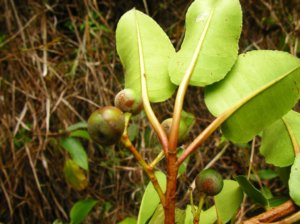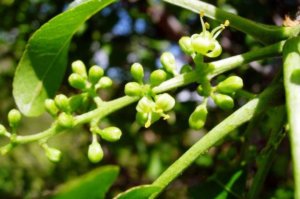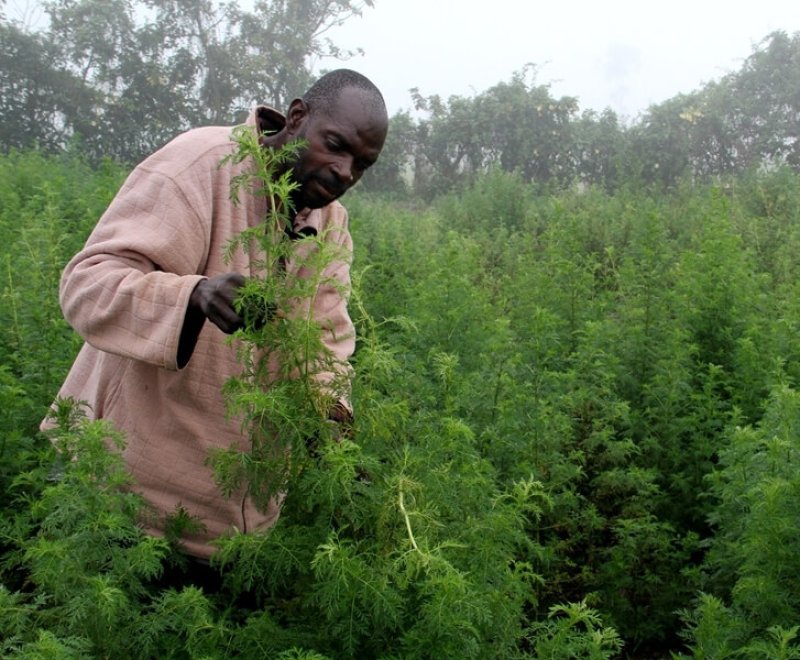And while much of those efforts are taking place in the US, Europe and China, that doesn’t mean there aren’t opportunities for work in nations like Uganda, where there is an abundance of plant species with potential medicinal value.
Health scientists in the African nation, under the ministry of health, have developed a number of drugs using various plant species and accepted biotech applications.
Evidence of this was seen during a recent agriculture show at Jinja, where pharmacists displayed a number of well-packaged drugs created from plants.
Ismail Senkungu, a pharmacist from the Uganda Pharmaceutical Society, said the nation’s scientists are using basic biotechnology applications to make drugs such as DEI Anti-malaria, Prunus herbal powder for treating prostate cancer, Zanthoxylum for sickle cell and diabetic patients, and herb sugar as a sweetener for patients with diabetes.
But there are greater opportunities on the horizon – if the nation’s legislators take steps to approve new biotechnology regulations that would allow for greater use of tools for genetic modification of plants. The issue is further complicated by the fact that some of these critical medicinal plants are on the verge of extinction.
“At the moment we can use grafting or tissue culture but for faster growth we need to apply genetic modification,” Senkungu said.
Here are several examples of existing drugs – and how they were created from plants.

Prunus herbal powder
The herbal powder, also known as Pygeum, offers treatment for enlarged prostate glands, was processed at Ugandas National Chemothrapy Laboratory using bark from the Prunus Africana plant.
Plant extracts are dried and ground into a powder that is mixed with sterile water. The mixture interacts with the hormones that cause enlargement of the prostate glands and helps them return to normal, Senkungu said.
This particular medicine is already in the Ugandan market, packages in a variety of forms, including capsules, granular tablets and in powdery form in bottles.
This has been possible through a partnership of the scientists who conducted the research for the Uganda Biotechnology and Biosafety Consortium (UBBC) a coalition of stakeholders promoting development of products using biotechnology.
DEI Anti-malaria
This drug was developed using the Artemisia plant as a treatment for malaria, according to Dr. Patrick Ogwang a pharmacist and lecturer at Mbarara  University of Science and Technology. He was the lead scientist for the team that developed the drug, which was blended with avocado extract and lemon grass for a better aroma.
University of Science and Technology. He was the lead scientist for the team that developed the drug, which was blended with avocado extract and lemon grass for a better aroma.
The drug has been approved by the National Drug Authority and is already available on the commercial market. Initial success have prompted farmers in some communities to begin growing the plant. This is particularly true in Western Uganda, where the weather favors its growth.
A study by Dr. Ogwang and his team showed that the natural extracted compounds are capable of killing malaria-causing parasites within the human body. The study used parasites collected from malaria patients at Mulago Hospital.
“They were all killed by the compounds of the drug. It was also tested on mice and it killed all the parasites without causing any toxicity to body organs,” Dr. Ogwang said.
Zanthoxylum diabetes treatment
Moses Agwaya a biochemist at the ministry of health, was part of an effort to develop a diabetes treatment using extracts from the Zanthoxylum plant. Initial testing of the drug, relying on diabetic mice, suggested it could be successful in treating the disease in humans.
He is in the process of formulating the extract to come up with a final product that can be released for commercial use – though some patients who’ve heard about its promise have started developing their own versions of the oily extract.
Agwaya said many chemists in Uganda are trying to develop drugs from medicinal plants to treat a number of sicknesses. Whatever the type of drug is developed the procedure is more or less the same, he said.

After identifying a plant with desireable traits, testing must be done to establish that the extract will be safe for human consumption. Initial testing is done on mice, rats and rodents to make certain the final product is nontoxic and not a potential problem for allergy sufferers.
And while these methods have proven their historic value, he argues that Ugandan scientists are missing out on advantages offered by genetic modification. Instead, they are limited to more natural processes. Consider, he said, the value of using genetic engineering to synthesize human insulin in 1982. The development allowed for unlimited production of human insulin at a time when there were fears declining supplies of animal pancreases would lead to shortages of insulin for a rising population of diabetics.
Currently, this type of research is something that Ugandan scientists can only engage in at the research level, with permission from the Uganda National Council of Science and Technology. Yet even if that permission were granted, he said researchers lack access to the necessary equipment.
Agwaya argues that Uganda needs to embrace modern advances, incuding gene edit ing, to help solve the challenges presented by existing and emerging diseases. But that can’t happen unless the adopts a new legal framework freeing its scientists to expand their research activiites.
Lominda Afedraru is a freelance science journalist in Uganda who specializes in agriculture, health, environment, climate change and marine science. Follow her on the Daily Monitor web site www.monitor.co.ug, Facebook or Twitter @lominda25































